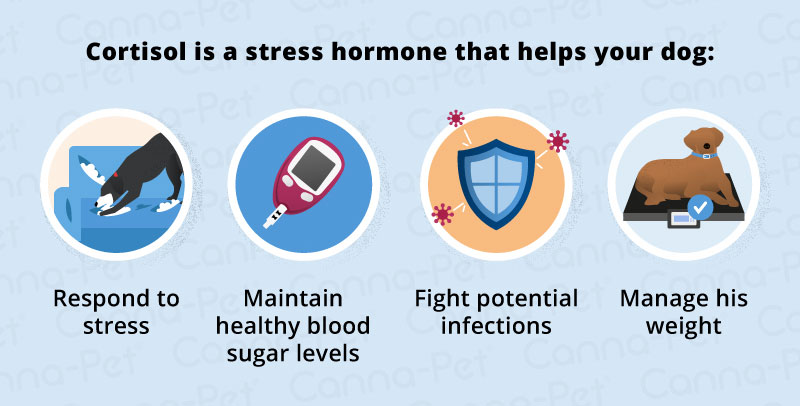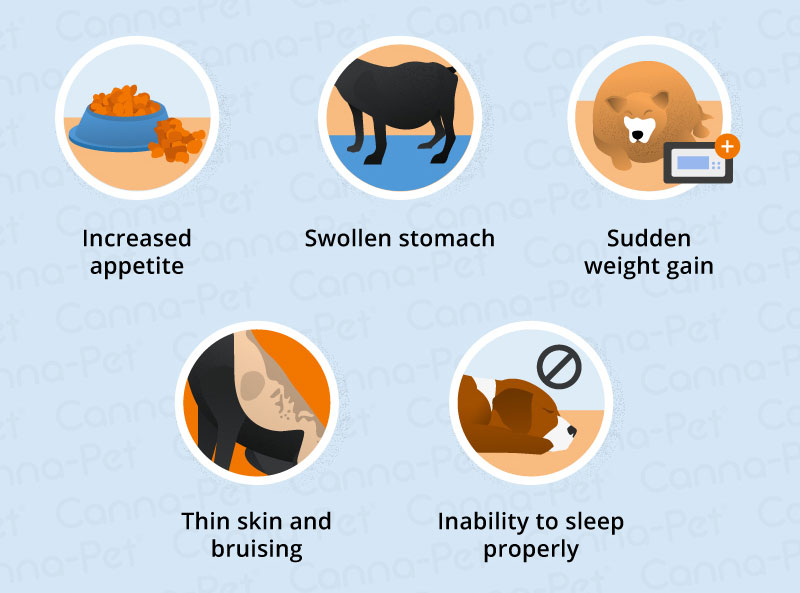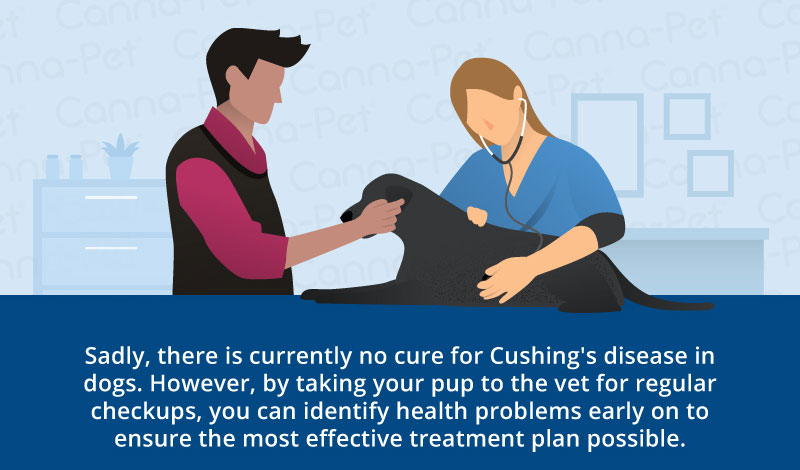Dogs are full of life and joy. They provide companionship and endless love to their fur parents, but just like humans, they can succumb to some nasty diseases and disorders that can have a drastic effect on their quality of life.
A dog’s health is controlled by a balance of enzymes and hormones that maintain various bodily functions and the organs and organ systems that comprise those bodily functions. Any imbalance in those hormones can spell serious problems.
Cushing’s disease in dogs is one such disorder that is becoming much more common among dogs. While it’s not usually fatal, Cushing’s disease in dogs does present a great deal of pain and discomfort and also accompanies health complications that could lead to an earlier death. Therefore, it is important to educate yourself on this hormone disorder, its treatment, and some steps you can take to keep your pup from ever having to deal with it.
What is Cushing’s Disease?
Named after the neurosurgeon who first described the disease in 1912, Cushing’s disease, also known as hyperadrenocorticism or hypercortisolism, is a hormone disorder that affects humans as well as dogs.
The pituitary gland is a key part of a dog’s endocrine system, responsible for controlling all of the hormone production throughout your dog’s body. A pituitary tumor in the pituitary gland or an enlarged pituitary gland can lead to Cushing’s disease.
Cushing’s disease specifically refers to increased cortisol levels in your dog as a result of a benign tumor in the pituitary gland. Cortisol is one of the main stress hormones in your dog. In the right doses, it helps your dog respond to stress, maintain healthy blood sugar levels, fight potential infections, and manage his weight.
Types and Causes of Cushing’s Disease in Dogs
There are generally two major forms of Cushing’s syndrome in dogs:
- Pituitary dependent: Affecting about 80 to 90 percent of dogs with Cushing’s disease. This is caused by a tumor in the pituitary gland.
- Adrenal dependent: About 15 to 20 percent of dogs with Cushing’s disease will be diagnosed with this type. In this form, Cushing’s disease is caused by a tumor in one of your adrenal glands. These glands sit above the dog’s kidneys and produce cortin, a complex mix of hormones that includes cortisol and cortisone.
In both cases, the tumors are usually benign, meaning they very rarely metastasize. Furthermore, while the two have their slight differences, they generally present the same symptoms and can be treated through similar medications and procedures.
Dogs may also get a form of Cushing’s disease called Latrogenic Cushing’s. This is caused by excessive administration of glucocorticoids. Glucocorticoids are a type of steroid used for treating allergies or inflammation or as a replacement therapy for dogs who have naturally low levels of cortisone.
Another form of the disease is known as Atypical Cushing’s disease. This form of Cushing’s is also caused by an adrenal gland tumor. However, the tumor does not cause the dog to overproduce cortisol. While your canine will still show the general symptoms of the disease, the normal production of cortisol means that certain treatments could be ineffective.
Signs and Symptoms of Cushing’s in Dogs
The sudden increase in excess cortisol or stress hormones has a significant effect on nearly every part of the dog’s body, to the point where it can be difficult for your veterinarian to properly diagnose as the symptoms often resemble those of other common conditions. Some symptoms you may see in a dog suffering from Cushing’s disease include:
- Increased appetite
- Increased thirst and urinating
- A pot belly or swollen stomach
- Sudden weight gain and obesity
- Fat pads around the shoulders and neck
- Thin skin and bruising
- An inability to sleep properly
- Fur loss, patchy fur, and/or generally slow growth of fur
- General fatigue and lack of energy
- Weak muscles
- Spindly legs
- Anestrus in female dogs (a sudden lack of a heat cycle)
- Shrinking testicles
- Frequent skin infections
- Darker skin
- The sudden appearance of blackheads on the skin
- Hard, scaly patches on your dog’s skin, a result of calcium deposits forming in the skin (a disease called calcinosis cutis)
Risk Factors for Cushing’s Disease
While Cushing’s disease can happen at any point in a dog’s life, middle-aged to older-aged dogs, usually around the age of 10 or 11, have a higher chance of suffering from the disease. Cushing’s disease caused by adrenal gland tumors is more common in dogs that are slightly older, 11 to 12 years.
Adrenal gland tumors are more common in large breed dogs, while smaller breeds with Cushing’s disease are more prone to pituitary tumors. Some dog breeds that generally have a higher chance of getting Cushing’s disease include:
- Poodles
- Yorkshire Terriers
- Boxers
- Staffordshire Bull Terriers
- Boston Terriers
- Beagles
- Dachshunds
- Jack Russell Terriers
- German Shepherds
Female dogs also tend to have a slightly higher risk of developing the disease.
Diagnosing Cushing’s Disease in Dogs
There is no single method for diagnosing Cushing’s disease that is 100 percent accurate, so your vet will likely perform a handful of tests to narrow it down. Diagnosis usually starts with simple blood and urine tests.
These tests can help the vet detect any high cholesterol, urinary tract infections, diluted urine, or problems with alkaline phosphatase, a protein found in your dog’s bones and liver. All of these tend to be hallmarks of dogs with Cushing’s disease.
From there, the vet may proceed with certain hormone screening tests. The three most common tests are:
- Adrenocorticotropin hormone (ACTH) stimulation test: This test measures how your dog’s adrenal glands perform in response to the hormone ACTH. Adrenocorticotropin hormone normally forces adrenal glands to produce cortisol. The vet can take blood samples before and after the ACTH is administered and determine how your dog’s system reacted.
- Low dose dexamethasone suppression (LDDS) test: Dexamethasone is a human-made, synthetic form of cortisol. Your veterinarian will inject a small dose of the dexamethasone into your dog’s system. Blood samples can help your vet determine how the synthetic hormone affected your dog’s body.
- Urine cortisol creatinine ratio test: This test measures the ratio of cortisol to creatinine in your dog’s urine. Ordinarily, the amount of creatinine your dog excretes should stay fairly consistent, but dogs with Cushing’s disease will show an increased ratio.
If your vet has determined that your dog does indeed have Cushing’s disease, they will next have to determine what type of Cushing’s disease they might be dealing with. A high dose dexamethasone suppression test can show your vet if your dog is dealing with a tumor in the pituitary gland or an overgrown pituitary gland. Your vet can also perform an endogenous ACTH concentration test to see if the Cushing’s disease is caused by an adrenal tumor.
Alternately, your vet may perform an x-ray or ultrasound of your dog’s belly. These forms of imaging can reveal about 50 percent of tumors in the adrenal glands. This may be followed by more imaging around your dog’s chest to check if the tumor has metastasized.
Treatment for Cushing’s Disease in Dogs
If the tumor causing the Cushing’s disease has not spread to other parts of your dog’s body, your vet can generally remove the tumor through surgery. This will cure your dog of the disease.
However, if the disease has spread or if your dog has other health problems that might make surgery difficult, your vet may prescribe medication. Thankfully, your dog can still live an active, full life with medication, though he will need the medication for the rest of his life.
Some owners also consider natural or holistic medicines to supplement treatment. You should consult your vet before adding any supplement to your dog’s diet or regimen. Common natural therapies for Cushing’s disease include:
- Dandelion – Brewed as a tea, tincture, or tonic, dandelion can potentially normalize certain adrenal functions and help certain liver and kidney issues.
- Melatonin – Melatonin has been found to inhibit aromatase and hydroxylase, two enzymes involved in the production of cortisol.
- Milk thistle – Milk thistle is a flowering herb that is often used as an effective treatment for liver problems. Cortisol can affect the liver, which has to work overtime to deal with the sudden flood of the stress hormone.
- S-adenosyl methionine (SAMe) – SAMe is a natural compound created in the liver and can contribute to normal liver function.
For iatrogenic Cushing’s disease, your vet can try to taper off administration of steroids or find a different method of treating the underlying condition. For atypical Cushing’s disease, many vets find success with flaxseed lignans.
How to Prevent Cushing’s Disease in Dogs
Sadly, there aren’t any ways to prevent Cushing’s disease. If your dog is currently under a course of corticosteroids for an existing condition, consult your vet for alternatives or lowered dosages to potentially prevent Cushing’s disease.
The best thing you can do to diagnose Cushing’s disease early is take your dog to the vet regularly for checkups. Keep a watchful eye on your dog’s behaviors. If you notice anything out of the ordinary, from sudden lethargy to odd bathroom habits, consult your vet immediately. The sooner you get the problem looked at, the more effective the therapy and the better chance you have of giving your pup a happy life.

Sources:
- “Cushing’s Disease in Dogs.” PetMD, Accessed 18 Jan 2018. www.petmd.com/dog/conditions/endocrine/c_dg_hyperadrenocorticism.
- “Cushing’s Syndrome in Dogs.” WebMD, Accessed 18 Jan 2018. www.pets.webmd.com/dogs/cushings-syndrome-dogs#1.
- “Cushing’s Disease in Dogs – Hyperadrenocorticism.” Vetwest Animal Hospitals, 6 Apr. 2016, Accessed 18 Jan 2018. www.vetwest.com.au/pet-library/cushing’s-disease-in-dogs-hyperadrenocorticism.
- Grognet, Jeff. “Cushing’s Disease in Dogs .” American Kennel Club, 5 Oct. 2016, Accessed 18 Jan 2018. www.akc.org/expert-advice/health/cushings-disease-in-dogs/.
- Brown, Jackie. “Cushing’s Disease in Dogs – Signs, Diagnosis and Treatment.” Dogster, 22 Oct. 2018, Accessed 18 Jan 2018. www.dogster.com/dog-health-care/cushings-disease-in-dogs.











